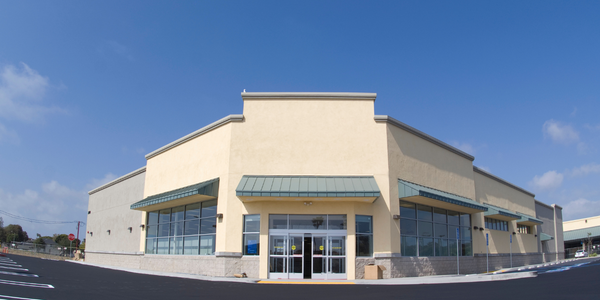Customer Company Size
Large Corporate
Region
- Asia
Country
- China
Product
- Lectra Fashion PLM
- Kaledo
- Modaris
Tech Stack
- Product Lifecycle Management (PLM)
Implementation Scale
- Enterprise-wide Deployment
Impact Metrics
- Productivity Improvements
- Cost Savings
- Customer Satisfaction
Technology Category
- Functional Applications - Product Lifecycle Management Systems (PLM)
Applicable Industries
- Apparel
Applicable Functions
- Product Research & Development
- Quality Assurance
Services
- System Integration
- Training
- Software Design & Engineering Services
About The Customer
Les Enphants, established in Taiwan in 1971, expanded to mainland China in the 1990s and has since become a significant player in the country's childrenswear market. The company, headquartered in Shanghai, operates 1,788 retail outlets across China under its Les Enphants and Nac Nac brands. Les Enphants' supply chain encompasses everything from design and sampling to production and retail. The company is dedicated to offering playful, functional, and high-quality clothing for children, adapting to market changes and consumer demands over the years.
The Challenge
Les Enphants, a Shanghai-based childrenswear company, faced significant challenges due to the pressures of the fast-fashion marketplace and increased consumer demand following China's new two-child policy. The company needed to speed up its process and produce a wider variety of styles while keeping costs low to avoid pricing itself out of the market. The impact of fast fashion and e-commerce had put the company under increasing pressure, making it difficult to maintain its commitment to providing playful designs and functional clothing that prioritize quality and comfort.
The Solution
Les Enphants chose Lectra Fashion PLM to manage its collection development, building on the success of Lectra's Kaledo and Modaris in its design and patternmaking departments. The fashion-specific PLM platform facilitated better visibility and collaboration across departments, speeding up the development of new collections and reducing errors. The company built an extensive library of pattern templates within the PLM, which standardized processes and minimized time lost due to errors and miscommunication. Lectra's user-friendly interface and industry-specific tools provided Les Enphants with the control needed to keep up with market demands, allowing designers to focus more on creativity and trend alignment.
Operational Impact
Quantitative Benefit

Case Study missing?
Start adding your own!
Register with your work email and create a new case study profile for your business.
Related Case Studies.

Case Study
Fire Alarm System and Remote Monitoring Sytem
Fire alarm systems are essential in providing an early warning in the event of fire. They help to save lives and protect property whilst also fulfilling the needs of insurance companies and government departments.Fire alarm systems typically consist of several inter-linked components, such as smoke detectors, heat detector, carbon monoxide, manual call points, sounders, alarm and buzzer. The fire alarm system should give immediate information in order to prevent the fire spread and protect live and property.To get maximum protection a shoe manufacturer in Indonesia opted for a new fire alarm system to monitor 13 production sites spread over 160 hectars. Although the company had an existing fire alarm system, it could not be monitored remotely.It was essential that the new system would be able to be monitored from a central control room. It needed to be able to connect to the existing smoke detector and manual call point. Information should be easily collected and passed on to the Supervisory Control and Data Acquisition (SCADA) system. Furthermore, the system should have several features such as alarm management, auto reporting, being connected to many client computers without additional cost, and run 24/7 without fails. The company also needed a system which could be implemented without changing the architecture of the existing fire alarm system.

Case Study
IoT Applications and Upgrades in Textile Plant
At any given time, the textile company’s manufacturing facility has up to 2,000 textile carts in use. These carts are pushed from room to room, carrying materials or semi-finished products. Previously, a paper with a hand-written description was attached to each cart. This traditional method of processing made product tracking extremely difficult. Additionally, making sure that every cart of materials or semi-finished products went to its correct processing work station was also a problem. Therefore, the company desired an intelligent solution for tracking assets at their factories. They also wanted a solution that would help them collect process data so they could improve their manufacturing efficiency.

Case Study
Retailer Uses RFID Scanner to Improve Efficiency
Patrizia Pepe wished to improve the logistics of their warehouse: accepting incoming goods from their production sites, movement of items throughout
the warehouse, and packaging of goods for distribution to the retail locations. They initially tried to use barcodes for this function. Because barcodes must be individually scanned within a line-of-sight, the acceptance of goods coming into the warehouse was too time consuming. Working with the University of Florence, Patrizia Pepe instituted a five-month pilot project beginning in August of 2009 to test the validity of an RFID solution. The pilot involved tagging of about 60,000 items for the second seasonal collection, and convinced the company to move forward with tagging all items.

Case Study
Monitoring and Controlling Automatic Mixing and Dispensing Machines
As technology advances, textile manufacturing has been transformed from a labor-intensive to a partially or fully automated industry. Automation is significant in all segments of textile production - from spinning to printing, and textile machinery manufacturers are constantly searching for new technologies and automation processes will increase the productivity of their machines. The color paste mixing and dispensing machine is an essential part of the printing and dyeing process. With the advantage of automatically computerized controls and database management, the system can significantly improve its dispensing precision, working efficiency and production quality as well as reducing material consumption.





